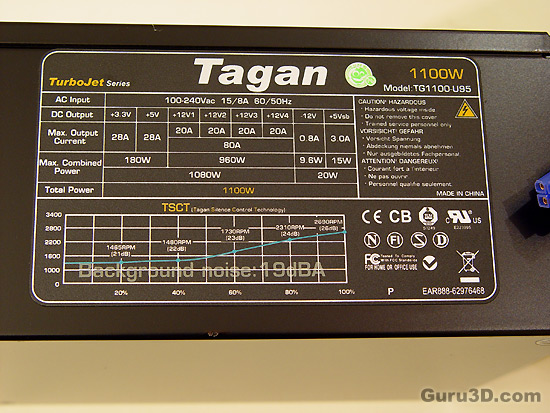Page 2
I've got the power ...
I already tried to make you aware of the importance of power consumption these days. It really is remarkable what a PC consumes (power wise). Manufacturers really need to take a good look at this problem as it is a growing concern. Let's do a little math with an average to high-end PC okay ? Take a dual core AMD64 Athlon X2 4400+ GHz based PC armed with the now mid-range Radeon x1800 GTO, three HDs, a DVD-writer and CD Writer. When windows boots it'll use up no more than like ~150 Watts.
The minute you overclock your processor and graphics card, and use the HDs and optical drives, your wattage will rise easily to about 350-380 Watts and can, at very stressful points, peak even higher. That still leaves plenty of room to play around. However, for every additional HD or optical drive you need to add 10 Watts and that's where the problem nowadays is.
Do you choose the never ending Guru path of upgrades in the form of SLI or Crossfire graphics cards ? Add another 75-100 Watts to the margin we just set. Do you have a dual CPU based rig or Dual Core processor ? That'll cost you about an extra 80 Watts and then there is additional cooling to ventilate all these "hot" gadgets. Therefore always choose a PSU with plenty of 'breathing' space for future upgrades and devices.
At this time I suggest you get at least a 400 Watt PSU for any mediocre PC, where that number was 300 Watts two years ago. With a lot of HD's and extras like active fans and case-mods such as lights, or if simply powering a high-end gaming rig, go for something even higher than 420 Watt. Starting with a 520 Watt PSU today is not really that bad of a specification for today's high-end computers.
But obviously if you are a true Guru .. you go for Quad SLI, Physics acceleration, overclocking & a Conroe processor right, ? We need some more powah !
Right, let's talk about the TG1100-U95.
Tagan released this power supply with the statement it will not only a huge amount of power across all rails, but does so with very little noise. The TG1100-U95 is has terrific aesthetics which we'll show you later on. Next to that you'll notice that the presentation of this product is short from impressive. Very clever marketing and product presentation for sure. The PSU is actually delivered in a stylish high-quality leather case.
So there you have it, 1100 Watts for Quad GFX engines and multi-core (server) systems. The TurboJet Series offers solutions for high-end gaming, video design, and server applications.
Features:
- Compatible with Intel EPS12V Ver.2.9 and downwards
- Universal motherboard support due to 20+4 pin main power as well as 4-pin & 8-pin +12V power connectors for 20, 20+4, 24+4, and 24+8 configurations
- Four 6-pin PCI Express connectors with REMI technology reduce EMI and support multiple graphic cards
- Combo-S2M (SATA to IDE) connectors empowering all types of hard drives
- Universal AC input range for all countries: 110~240VAC
- 36 months warranty
Primary Voltage rail specifications:
- 3.3V-25A
- 5V-25A
- 12V1-20A
- 12V2-20A
- 12V3-20A
- 12V4-20A
Combined ratings are:
3.3V & 5V-180W 12V 1-4-960W Total wattage for all rails including -12V and 5VSB, 1100W
What's all the hype about multiple 12-volt rails ? As explained on PCPower Two rails is better than one, five is better than four, etc, youd think it was a better design. We don't think it is. A large, single 12-volt rail can transfer 100% of the 12-volt output from the PSU to the computer, while a multi-rail 12-volt design has distribution losses of up to 30% of the power supplys rating. Those losses occur because power literally gets trapped on under-utilized rails. For example, if the 12-volt rail that powers the CPU is rated for 17 amps and the CPU only uses 7A, the remaining 10A is unusable, since it is isolated from the rest of the system.
Just like Tagan specifies .. the maximum current from any one 12-volt rail of a multiple-rail PSU is limited to 20 amps (240VA / 12 volts = 20 amps), PCs with high-performance components that draw over 20 amps from the same rail are subject to over-current shutdowns.
Allow me to commence with both the beginning and the end results straight away. Ladies and gentlemen .. it's time to start the the sexy photo shoot.
